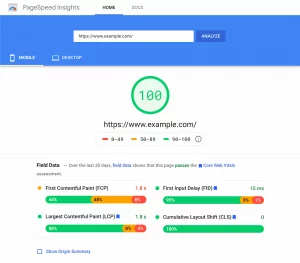In today’s connected software landscape, APIs are at the heart of almost every modern application—powering everything from maps and payments to chatbots and analytics. But with great power comes great responsibility. One of the most crucial responsibilities for developers is protecting API keys, especially in frontend applications like those built with React.
Unfortunately, a common mistake among developers—especially beginners—is hardcoding the API key in React app directly into the source code and then pushing that code to a version control system like GitHub, GitLab, or Bitbucket. This mistake can expose sensitive credentials to the public, putting your application at serious risk of abuse, unexpected charges, or even data breaches.
Luckily, there’s a secure and standardized solution to prevent this: using environment variables managed via .env files. In this guide, we’ll break down exactly what API keys are, why they need protection, and how to properly store and use them in a React project without risking exposure.
What are API keys?
If you’ve recently joined up for an API, you’ll receive an API key.
Think of API keys as secret passwords that prove to the provider that you or your app are seeking to access the API.
While some APIs are free, some require payment for access, and because most API-keys have no expiration date, it is frightening not to be concerned about the security of your keys.
Why Do API Keys Need Protection?
1. 🛑 Prevent Unauthorized API Access
API keys function as authentication tokens that grant access to powerful functionalities within external services. If these keys are unintentionally exposed—say, via a public GitHub repository—they can be easily copied by anyone with access to your codebase.
Bad actors can then use your API keys to:
- Send unauthorized requests on your behalf
- Exploit rate limits or exceed API quotas
- Execute operations you never intended (e.g., sending emails, initiating transactions, fetching private data)
- Cause service disruptions by overloading endpoints
In essence, an exposed API key is an open invitation to exploitation, and it puts your entire application’s backend infrastructure at risk.
2. 💸 Avoid Unexpected and Costly Financial Charges
Many API providers offer usage-based pricing models. This means you’re billed based on how often or how heavily your application interacts with the API.
Now imagine this scenario: a hacker gets hold of your API key and starts sending thousands of requests—perhaps through bots or automated scripts. Within hours, you could be looking at:
- Exceeding free-tier limits and incurring unexpected overage charges
- Maxing out paid quotas, resulting in service throttling or outages
- Potentially thousands of dollars in charges, depending on your plan and billing setup
Without proper monitoring and key protection, these costs can escalate rapidly and silently, only becoming apparent when your credit card is already charged or your services are suspended.
3. 🔐 Safeguard Sensitive Data and System Integrity
APIs aren’t just used for retrieving information—they’re also gateways to modifying, deleting, and writing data within systems. If your exposed API key includes read-write access, the consequences could be catastrophic.
An attacker could:
- Access confidential user information (emails, payment history, PII)
- Delete or modify existing records
- Inject malicious data into your database
- Manipulate application settings or configurations
Such misuse could lead to widespread data loss, corruption, compliance violations, or even permanent damage to your infrastructure.
4. 📉 Protect Your App’s Reputation and Brand Credibility
In the digital age, trust is one of your most valuable assets. If users discover that your application exposed sensitive keys and suffered a breach, the impact could be devastating—not just technically, but publicly.
Consider the potential fallout:
- Loss of customer trust and user abandonment
- Negative reviews and poor media coverage
- Legal action or regulatory scrutiny, especially if you deal with protected data (GDPR, HIPAA, etc.)
- Downtime or service degradation due to unauthorized traffic
Rebuilding trust takes time and effort—far more than the time it takes to follow simple key-protection best practices. The damage to your brand’s image can far outlast the breach itself.
Hide Your API Key Using The .env file
To create a .env file for your project created with create-react-app, follow these steps:
- Go to the root directory of your project.
- Create a new file anointed “.env” in the root directory.
- Open the “.env” file using a text editor.
- Declare your environment variable with the prefix “REACT_APP_” followed by your custom variable name.
For example, if your variable is “RAPID_API_KEY“, the full environment variable name would be “REACT_APP_RAPID_API_KEY“.
- Assign the API key to the declared variable by adding an equal sign followed by the value.
For example, “REACT_APP_RAPID_API_KEY=1234212343“.
- Save the “.env” file.
Your .env file should now contain the declared environment variable with the assigned API-key. Make sure to use this variable in your React application to access the API-key.
Using the .env file
Utilizing the.env file produced in the previous stages.
Open the file that you wish to use to show a connection to the API endpoint.
- Follow the formatting instructions to use it.env.REACT_APP_CUSTOM_______NAME
- The format to connect to the RAPID API endpoint will be handled using our instance. Environment REACT APP Rapid API Key
- Using npm, restart your application launch and reload the program
- Now that your app is linked to the API endpoint
🔐 Best Practices for Managing API Keys in Production (No Code Needed)
Whether you’re launching a React app or maintaining a complex SaaS platform, your API keys act as secret credentials that unlock services, data, or transactions. That’s why protecting them in production isn’t just a good idea—it’s mission-critical. Below are detailed best practices for managing API keys securely, even if you’re not working directly with backend code.
1. Use Secure Environment Variable Hosting Platforms
In production environments, sensitive information like API keys should never be hardcoded into your app. Instead, use platforms that support environment variable management to store and control your API keys securely.
Popular platforms such as:
- Nestify – Ideal for React apps, Nestify allows you to define, encrypt, and manage environment variables securely and integrates easily with deployment pipelines.
- Vercel & Netlify – These offer intuitive dashboards for managing secrets across development, staging, and production environments.
This separation of secrets from source code protects your credentials and reduces the risk of accidental exposure.
2. Never Hardcode API Keys—Use Environment Files
A common mistake is placing API keys directly into your application’s code. Even if your code is “private,” anything exposed on the frontend can be seen by others. Instead, developers should store their keys in environment files (commonly .env files), which are excluded from public version control (like GitHub).
This approach makes it easier to:
- Keep sensitive data hidden from the public
- Swap out credentials without altering your app’s logic
- Separate development and production environments with different keys
Even if you’re not writing the code yourself, insist that your development team follows this practice.
3. Handle Sensitive Operations on the Server
While React is a frontend framework that runs in the browser, many operations—especially those involving sensitive credentials—should be handled on a secure backend. This could be a cloud function, an API endpoint, or a traditional backend service.
Why? Because API keys exposed in a frontend app can be easily copied and abused. By delegating critical tasks (like billing, authentication, or database access) to the backend, your API keys remain safely hidden.
If you’re hosting with Nestify, their platform allows for serverless backend support—so your frontend team can build and deploy secure backend logic without maintaining a dedicated server.
4. Enable Usage Monitoring and Alerts
Most reputable API providers offer built-in dashboards for monitoring how your keys are being used. These platforms often allow you to:
- Track the number of API calls made over time
- Set usage thresholds or request limits
- Receive notifications if usage exceeds expected patterns
Monitoring helps detect unusual behavior early—such as a stolen key being used for malicious purposes—before major damage occurs. If your API provider supports alerting, make sure it’s enabled and connected to your email or Slack.
5. Restrict Access by IP Address, Domain, or Referrer
To further tighten security, use restriction features provided by your API provider. These include:
- IP Restrictions: Only allow API requests from known IP addresses (e.g., your production server or backend service).
- Domain Whitelisting: Limit frontend API keys to specific websites or subdomains.
- Referrer Restrictions: Allow access only from approved referrer headers, so stolen keys won’t work on unauthorized sites.
These safeguards ensure that even if someone obtains your API key, they can’t use it outside the environments you’ve approved.
6. Rotate Keys Regularly
Periodic key rotation adds another layer of protection. This means:
- Generating new API keys every few weeks or months
- Phasing out older keys
- Updating your environment settings without disrupting service
Automated deployment tools like Nestify make it easy to update secrets across environments during a deployment cycle, without introducing downtime or code errors.
Learn about memorization in React app now.
Secure Your API Key in React the Right Way
Protecting your API keys is not optional—it’s an essential step in ensuring your React application remains secure, stable, and trustworthy. By storing API keys in environment variables and using tools like .env with the dotenv package, you’re implementing a foundational security layer that defends your app from unauthorized access, financial exploitation, and data breaches.
Remember, your front-end code is publicly visible—so it’s your responsibility as a developer to ensure that no sensitive information is exposed during builds or deployment. By integrating secure development practices and managing API keys correctly, you not only protect your own resources but also safeguard your users and uphold your app’s integrity.
🛡 Bonus Tip: Host Your App Securely with Nestify 🚀
Even if you’ve secured your code, your hosting environment matters just as much. If you’re deploying your React app to production, choosing a secure, scalable, and developer-friendly hosting platform is critical.
Nestify offers blazing-fast managed hosting tailored for modern web applications—complete with advanced security configurations, built-in caching, and 24/7 expert support.
🔐 Start your secure hosting journey with Nestify and get peace of mind from development to deployment.
👉 Try Nestify for FREE and deploy your React app securely.
Developer FAQ: Securing API Keys in React
What tools can I use to monitor or protect my API keys?
Some useful tools and platforms:
- GitGuardian – Detect secrets in source code
- Snyk – Check for vulnerabilities in your dependencies
- dotenv-vault – Manage environment variables across environments
- Nestify – Secure hosting and environment variable integration
What are the consequences of API key leaks?
Leaked API keys can result in:
- Huge bills from usage-based APIs (e.g., Google Maps, OpenAI)
- Service suspension or rate-limiting
- Compromised data or credentials
- Loss of trust from users or clients
- Compliance and legal issues (especially with GDPR/CCPA)
Always rotate keys, use access control, and minimize client-side exposure.



